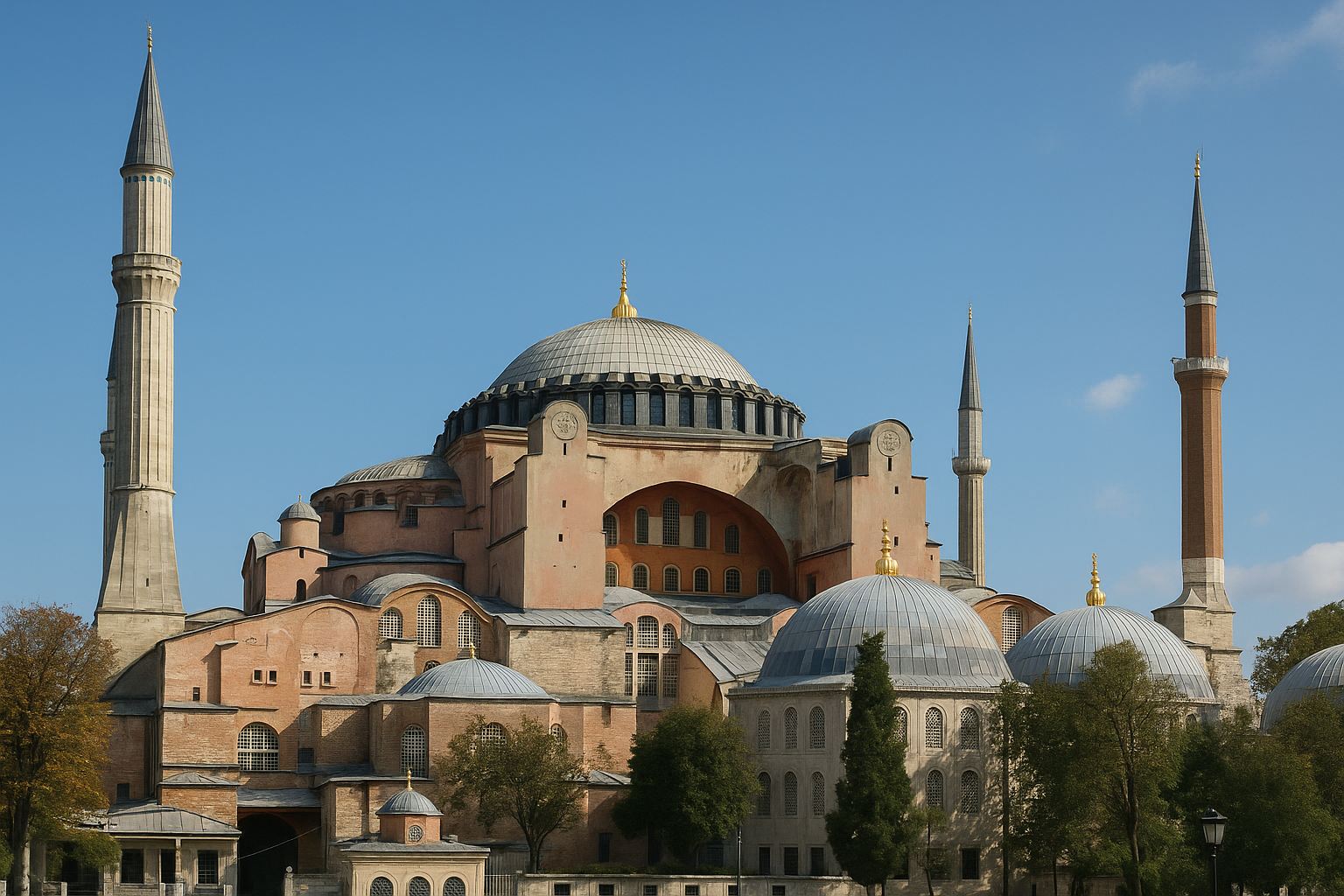
Ayasofya Camii (Hagia Sophia Grand Mosque)
HISTORICAL BACKGROUND AND SIGNIFICANCE
The Ayasofya, or Hagia Sophia, stands as one of the most significant architectural achievements in history. Originally constructed as a cathedral in 537 AD under the Byzantine Emperor Justinian I, it served as the center of Orthodox Christianity for nearly a thousand years. The building was a symbol of the Byzantine Empire's power and religious authority. Following the Ottoman conquest of Constantinople in 1453, Sultan Mehmed II converted the structure into a mosque, marking a pivotal moment in Islamic history. The Ayasofya remained a mosque for almost 500 years until it was secularized and turned into a museum in 1935. In 2020, it was reconverted into a mosque, reflecting its ongoing significance in both religious and cultural contexts.
ARCHITECTURAL FEATURES AND DESIGN ELEMENTS
The architectural brilliance of Ayasofya is evident in its massive dome, which was an engineering marvel of its time. The dome, measuring 31 meters in diameter and rising 55 meters above the ground, appears to float above the central nave, supported by a series of semi-domes and arches. The interior is adorned with stunning mosaics, many of which depict Christian iconography, including the Virgin Mary and Christ Pantocrator. The use of light is particularly striking; 40 windows at the base of the dome create an ethereal glow, enhancing the sense of divine presence within the space.
The building's exterior features a blend of Byzantine and Ottoman architectural styles, with its grand minarets added during the Ottoman period. The intricate marble pillars, vast nave, and the lavish use of gold and colored stone in the interior design all contribute to the grandeur of this iconic structure.
CULTURAL AND RELIGIOUS IMPORTANCE
Ayasofya is not just an architectural masterpiece; it is a symbol of the cultural and religious convergence that has taken place in Istanbul over the centuries. As a cathedral, it was the heart of Eastern Orthodox Christianity, while its transformation into a mosque marked the Islamic influence in the region. Today, it serves as a mosque, where daily prayers are held, and it remains a site of pilgrimage for Muslims. The building embodies the rich tapestry of Istanbul's history, where East meets West, and Christianity intersects with Islam.
VISITOR EXPERIENCE AND WHAT TO EXPECT
Visiting Ayasofya is a profound experience that allows one to connect with centuries of history. Upon entering, visitors are greeted by the vastness of the interior space, the stunning mosaics, and the intricate calligraphy that adorns the walls. The atmosphere is both reverent and awe-inspiring, as the building is still an active place of worship.
Visitors are encouraged to dress modestly, as it is a mosque, and women are required to cover their heads. The best time to visit is early in the morning or late in the afternoon to avoid large crowds. Audio guides are available for those who wish to delve deeper into the history and significance of the site.
INTERESTING FACTS AND ANECDOTES
1. The name 'Hagia Sophia' translates to 'Holy Wisdom' in Greek, reflecting its original purpose as a cathedral dedicated to the divine wisdom of God. 2. The dome of Ayasofya was considered so innovative that it influenced the design of many subsequent mosques, including the famous Blue Mosque in Istanbul. 3. During its time as a museum, Ayasofya underwent extensive restoration work, which revealed many of its original mosaics that had been covered during the Ottoman period. 4. The building has survived numerous earthquakes, a testament to its robust construction and design.
PRACTICAL VISITING INFORMATION
- **Hours**: Ayasofya is open to visitors daily, but hours may vary depending on prayer times. It is advisable to check the official website for the latest information. - **Best Times to Visit**: Early mornings or late afternoons are ideal for avoiding crowds. Weekdays tend to be less busy than weekends. - **Tips**: Bring a scarf or shawl if you are a woman, as head coverings are required. Photography is allowed, but be respectful of worshippers. Consider joining a guided tour for a more in-depth understanding of the site’s history and significance.
In conclusion, Ayasofya Camii (Hagia Sophia Grand Mosque) is not only a remarkable architectural feat but also a living testament to the rich history and cultural interplay of Istanbul. Whether you are a history buff, an architecture enthusiast, or a spiritual seeker, a visit to Ayasofya promises to be a memorable experience that resonates long after you leave its hallowed halls.